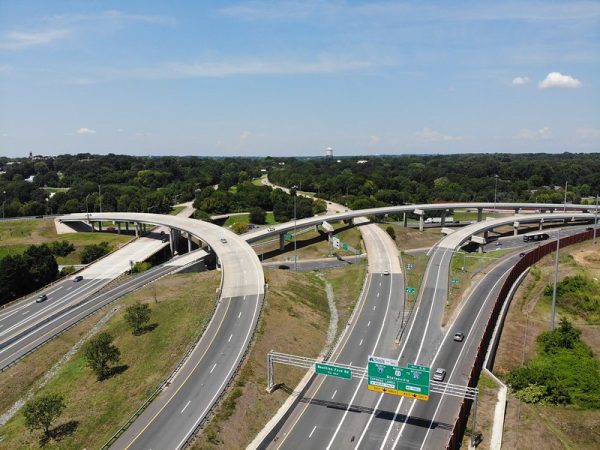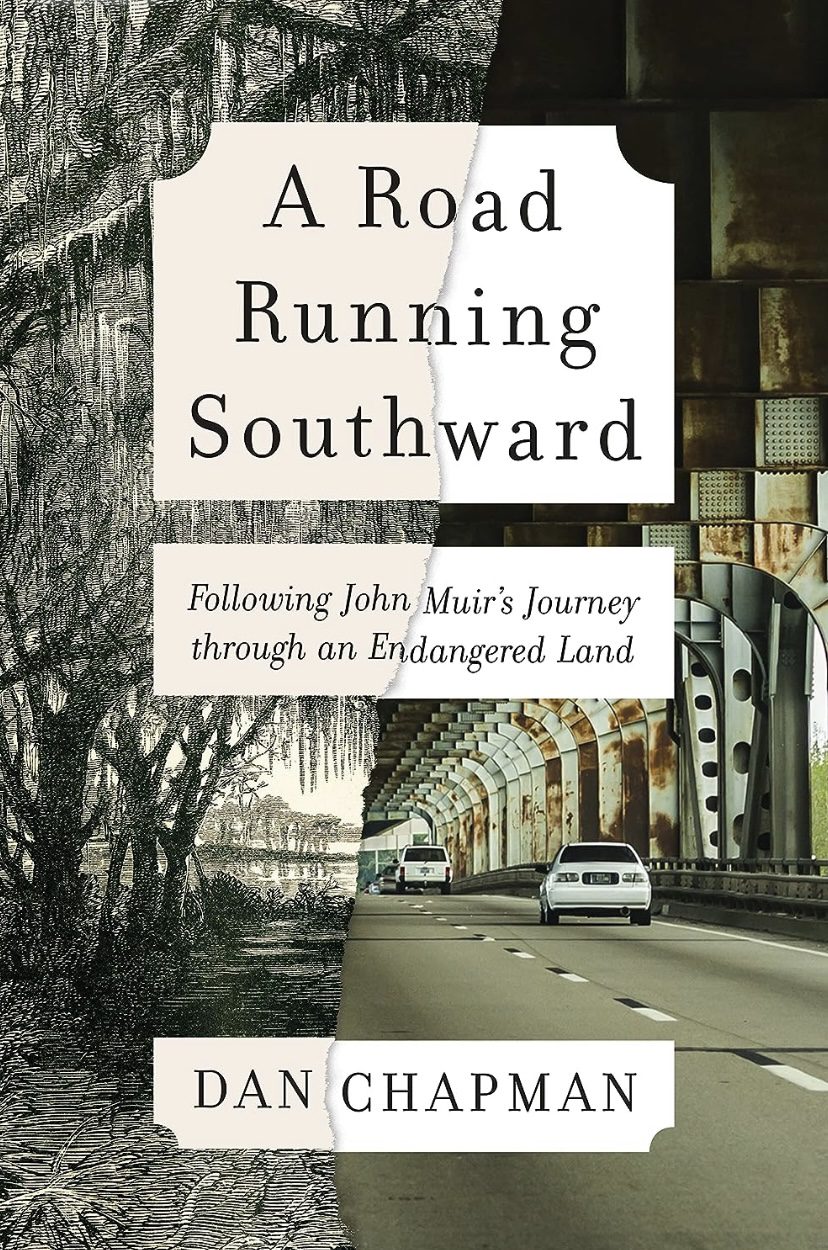A Road Running Southward

Before John Muir became known for his ramblings in Yosemite and the Sierra Nevada, he trekked through the South from Kentucky to Florida. In 1867, at the age of 28, Muir suffered a workplace accident he feared would leave him permanently blind. Within a few months, he had fully recovered, but his experience prompted him to embark on a long deferred trip to explore the natural areas of the South. His notes from that adventure were published as A Thousand-Mile Walk to the Gulf.
His plan was to journey southward by “the wildest, leafiest, and least trodden way I could find.” While he found an abundance of natural wonders, he also encountered a region still reeling from the Civil War. It was also on the cusp of widespread environmental degradation.
 More than 150 years later, Atlanta-based journalist Dan Chapman decided to revisit Muir’s route through the South and take stock of how the natural world had fared. The result is his lively, thought-provoking – and dare I say sprawling? – book A Road Running Southward: Following John Muir’s Journey through an Endangered Land. Instead of walking, he sets out in his trusty Subaru for a series of enlightening trips. Chapman uses each one to highlight an issue central to the state of the environment in the South.
More than 150 years later, Atlanta-based journalist Dan Chapman decided to revisit Muir’s route through the South and take stock of how the natural world had fared. The result is his lively, thought-provoking – and dare I say sprawling? – book A Road Running Southward: Following John Muir’s Journey through an Endangered Land. Instead of walking, he sets out in his trusty Subaru for a series of enlightening trips. Chapman uses each one to highlight an issue central to the state of the environment in the South.
In Louisville, Kentucky, he explores the urban/suburban sprawl that has become a hallmark of the modern Piedmont, a region dubbed The Southern Megalopolis in a 2014 PLOS ONE article. By 2060, the authors envision “an uninterrupted 400-mile ribbon of concrete with Interstate 85 as its spine” running from Raleigh through Charlotte and past Atlanta. They expect the urban footprint of this Piedmont Megaregion to nearly triple. Chapman calls the report “well-researched, quite readable, and scary as hell.”
At Mammoth Cave National Park and at a Nature Conservancy tract near Boone, North Carolina, Chapman sees firsthand the threats to the region’s lush biodiversity. He visits friends grappling with rising seas at Tybee Island, Georgia. He tours Ossabaw Island, Georgia, with a young man hired to keep an invasive species, the exploding population of feral pigs, in check. He delves into the longstanding battle between Georgia, Alabama and Florida for rights to water from the Chattahoochee River.
“The farm and forest fueled the South’s rebirth,” Chapman writes. The cotton and tobacco and longleaf pine. He later adds rivers to that list. Dams provided electricity to the “mills and factories that turned the South into a manufacturing powerhouse.” In addition to the appealing abundance of natural resources, Chapman wryly acknowledges that labor in the region was cheap and elected officials were “pliant.”
Muir’s journey through the South ended at Cedar Key on Florida’s Gulf Coast on October 23, 1867 (Note: Hurricane Idalia made landfall near Cedar Key in August.). The location is a fitting coda for Chapman’s assessment of Muir’s route. “Just about every environmental ill discovered along the Scotsman’s thousand-mile trek is found within a short ride of Cedar Key. Sprawl. Sea-level rise. Air and water pollution. Natural resource destruction. Water wars. Ever-weirder weather. Threatened and endangered species. Invasive species.” Everything eventually moves downstream.
The picture is bleak, but Chapman actually pulls a few punches. When oyster reefs off Cedar Key disappear, endangered oystercatchers don’t simply “find healthier hunting grounds” elsewhere. That’s the comforting bedtime story we tell ourselves when we destroy habitat. Nature abhors a vacuum – any other appropriate habitat will likely already be at its carrying capacity. Displaced animals generally aren’t able to relocate; instead, they die. That’s why populations of so many species are in such steep decline.
In Chapman’s telling, people also suffer from the environmental degradation in the South, sometimes in dramatic ways. He points to the massive coal ash spill in Kingston, Tennessee, and the devastating wildfires in and around Gatlinburg in 2016.
And yet there’s hope for all of us. In general, our skies are clearer and our rivers are cleaner than they were in decades past. Forests now cover once-denuded Appalachian slopes. Chapman highlights an oyster reef restoration project off Cedar Key that holds great promise for wildlife and fishermen alike and an effort among utility companies in the lower Savannah River basin to protect water quality by conserving nearly two million riparian acres.
Chapman calls the loss of green space “the greatest environmental scourge affecting the rural South today.” During an interview with Ely Portillo on WFAE’s Charlotte Talks, he noted a renewed interest in land conservation, especially in the wake of the COVID-19 pandemic when people sought solace in nature and safe spaces to gather outdoors. If we can translate that interest into action, there’s some hope for preserving our diverse and cherished landscapes for the next 150 years.